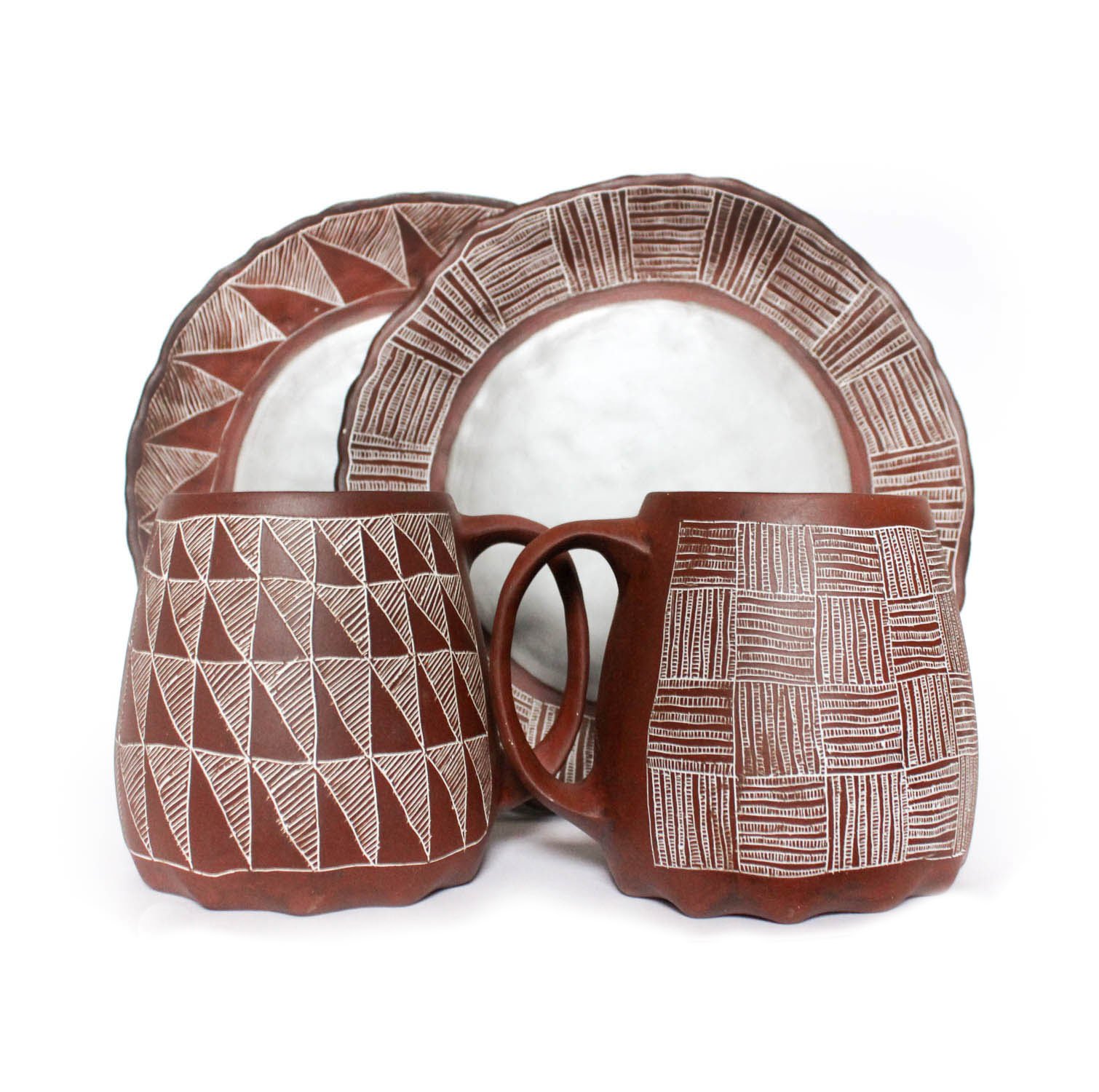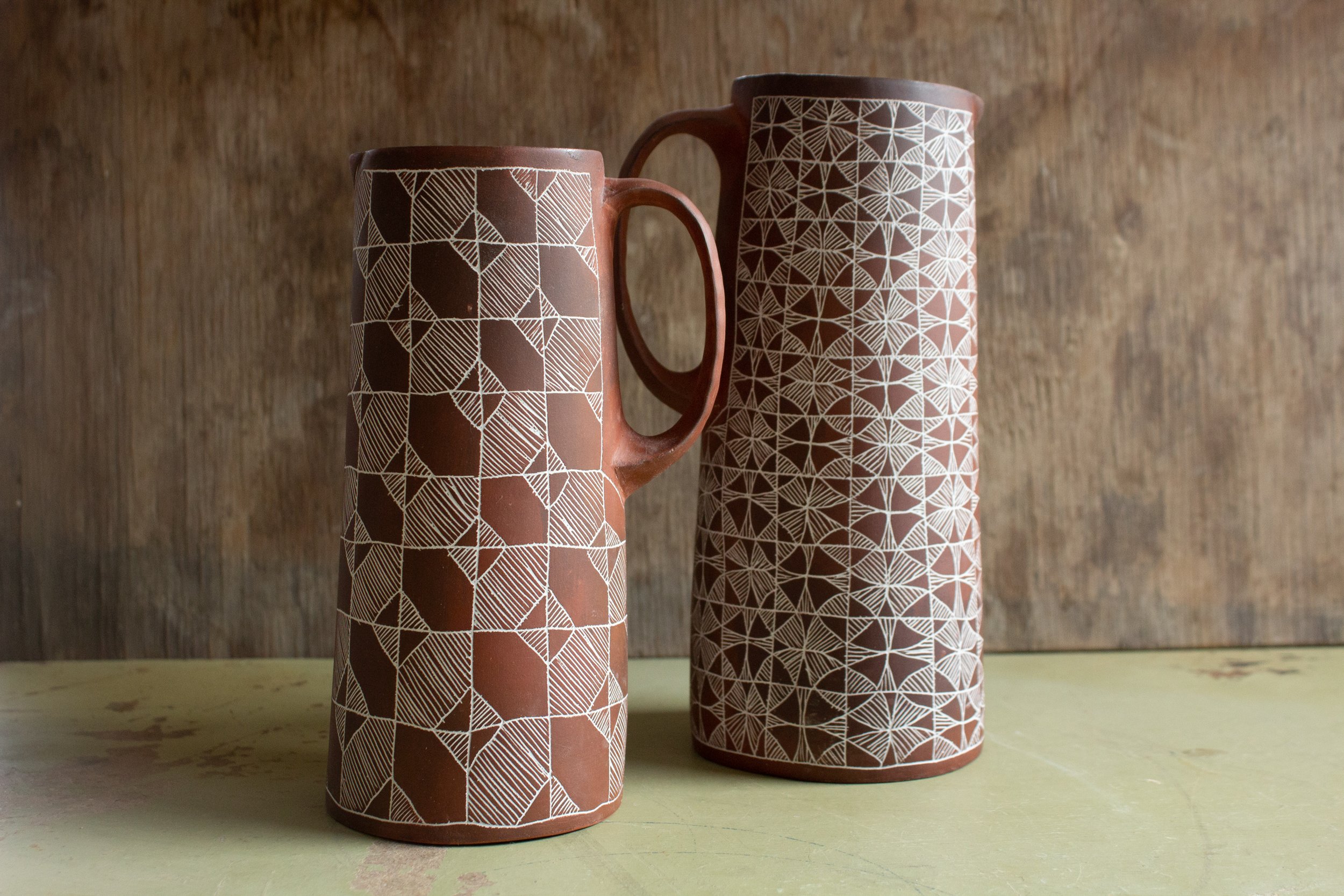Margaret Kinkeade
Growing up in northeast Oklahoma, my introduction to art in life was in gentle moments of curiosity looking over my grandmother sewing table, fumbling around in her needlepoint projects, and cleaning hobby pottery with my aunt each summer vacation. Drawn to the transformative nature of process-based work, I watched (and later participated) in creative tasks done bit-by-bit with purpose and consideration. Slow work, done leisurely for the enjoyment of both the maker and the viewer/user.
My paternal grandmother, mother of two boys, sparked my love for heirloom fiber work and in my undergraduate studies my work explored ideas of women’s work, feminine symbolism, and matrilineal transmission of tradition. Working as a printmaker, drawings considering the generational skip of mother to daughter were translated to paper, soap and fiber and further embellished with time and thread or transformed into ubiquitous domestic objects/adornments.
After my first child was born, my creative interest shifted from relief printing processes to working with clay and my practice has significantly changed over the past ten years. After graduating with my BFA in Printmaking from the University of Oklahoma I earned my MFA in Ceramics from Pennsylvania State University in 2014. My journey in clay started with porcelain sculptural objects exploring the tools made and used by Shaker communities to perform work such as collecting apples, washing laundry, spinning wool, and more. Shakers of both sexes contributed to the advancement of their counterpart’s working methods. A Shaker sister is responsible for the circular saw (which was inspired by her spinning wheel) and a Shaker brother for the one-piece clothespin. Even though a distinct division of labor between the sexes was present, there was a shared responsibility and understood worth of each member’s work and craft.
Upon graduating I relocated with my family to Kansas City, Missouri, to teach ceramics in an adjunct capacity at Kansas City Art Institute. Along with this geographical shift came a new direction in my studio work post-graduate school. While still interested in the domestic object as souvenir, the collection as identity, and community connection through shared work my work became influenced by the processes and patterns of American folk art and traditional craft. With a particular focus on those objects and methods historically utilized by women. Whether made to ease work, carry wet laundry, or create comfort these objects were not made hastily. They were formed through great craftsmanship, consideration of material, and an emphasis on long-term practicality.
My current studio practice is inspired by American quilts with a particular interest in the imperfectly perfect quilts of the everywoman. As a maker whose family line has its share of quilters, I see the fiber quilt as a way of making use of the discarded - giving the material a second life. By filtering traditional quilt patterns through my hand these haptic drawings allow me to enter into conversation with my great-great-great-grandmother whose stitches warm my bed each night. Translating those patterns into clay came as a way to further connect a material so embedded within the domestic landscape to the ideas of time, tradition, community, ritual, and function. Quilts and dishes often represent a matrilineal inheritance of both family heirlooms and traditions while lending themselves to the ritual connection of people through creation and function.
The Piecing body of work is ongoing and made of arrangements that only come into being as a result of their use. As the participants engage in the breaking of bread with strangers and friends alike they become active participants in the shaping of the “quilt” composed of the plates from which they eat. Upon finishing their bread, they’re invited to choose the position of their plate on the wall of the gallery. These ceramic “quilts”, while each plate is different and made for individual engagement, are made dynamically whole through use and assemblage just like squares coming together in a quilting bee. Through this shared activity the audience is invited to connect and contribute as has been the tradition in sewing circles for generations. The community together creates a configuration that will act as a fingerprint of the moment, the ritual, and the gathering with no two arrangements alike.




